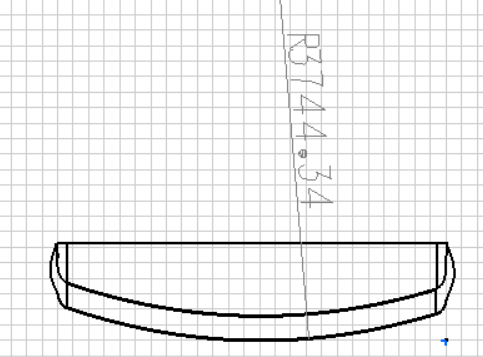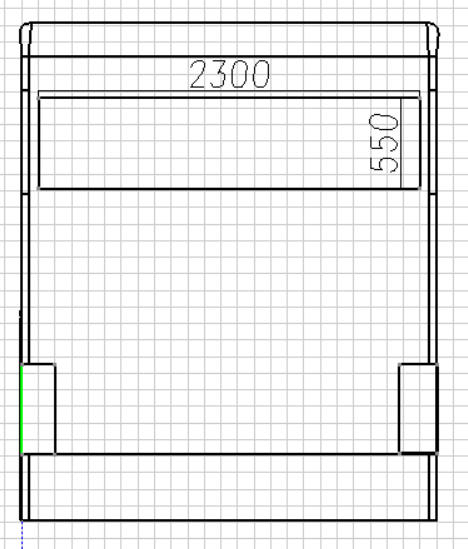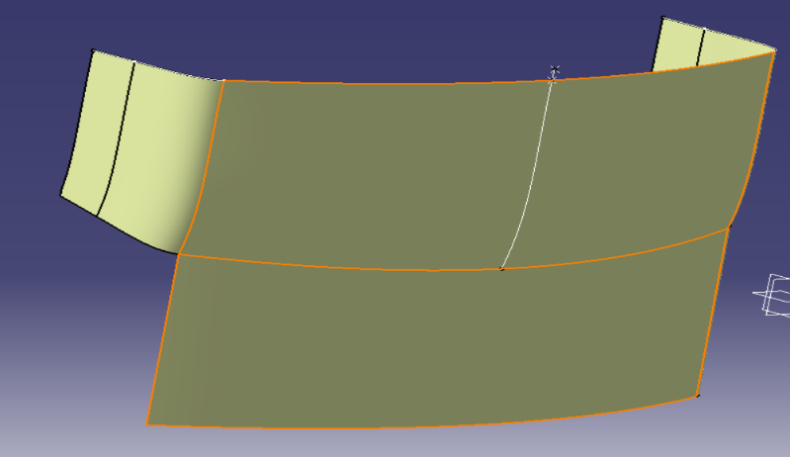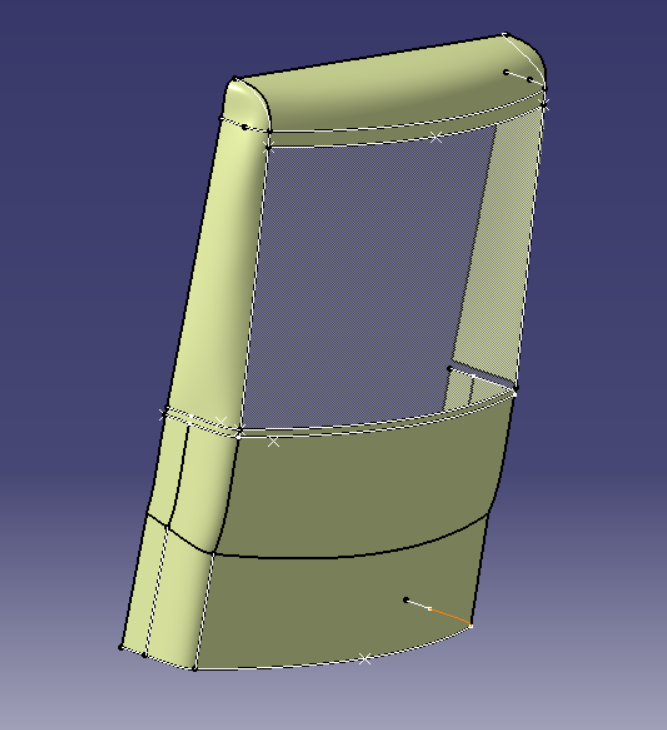纯电动6100BEV公交客车车身总布置设计毕业论文
2020-02-17 10:56:44
ABSTRACT
In recent years, China's urbanization process has accelerated, urban population has increased and residential suburbanization has caused a sharp increase in traffic demand. According to China's national policies, prioritizing vigorous developing in public transport and implementing public transportation is one of the main ways and solutions for solving urban traffic congestion. In order to speed up the development of urban public transport, this project combines the development project of pure electric 6100BEV city bus. The car body shape is designed based on the existing chassis in the three-dimensional design software CATIA environment. The car handrails, seats and other components were arranged, and the various parts of the driving area were modeled and arranged. Finally, the ergonomics of the driving area was checked and the overall layout of the vehicle body was completed. In the design process, the theoretical analysis of the arrangement and size of each component is made according to the existing experience and standards. Then the modeling design is carried out according to the theoretical analysis. In the theoretical analysis and modeling process, the design is repeatedly modified to make the whole vehicle look beautiful and generous, make full use of the limited space in the interior layout, improve the passenger capacity, driving comfort, and make the interior layout more comfortable for humans.
Key words :ergonomics, Pure electric bus ,CATIA,, overall body layout
Content
Chapter 1 Introduction 1
1. 1 Analysis of the status quo of new energy buses 1
1.2 Content and significance of project 2
1.3 Chapter summary 3
Chapter 2 Bus body design 3
2.1 Application of aerodynamics in body modeling 3
2.2 Car body drawing 4
2.2.1 The determination of the coordinate system 4
2.2.2 Determination of coordinate zero plane 4
2.2.3 Drawing arrangement 5
2.2.4 Label 5
2.3 Overall layout of the body exterior 5
2.3.1 Front side layout 5
2.3.2 Left side layout 6
2.3.3 Right side layout 7
2.3.4 Rear side layout 7
2.3.5 Top cover layout 8
2.4 3D model design of the body 9
2.4.1 Front side modeling 9
2.4.2 Side wall modeling 10
2.4.3 Rear side modeling 11
2.4.4 Top cover modeling 11
2.4.5 Rearview mirror modeling 12
2.4.6 External surface assembly 13
2.5 Chapter summary 13
Chapter 3 Design of main Reducer Gear 14
3.1 Interior floor design 14
3.1.1 Floor level 14
3.1.2 Channel width 15
3.1.3 Step design 15
3.1.4 Floor three-dimensional molding 15
3.2 Passenger seat and seat bracket design 16
3.3 Passenger area seat assembly 17
3.4 Passenger area handrail assembly 18
3.5 Chapter summary 19
Chapter 4 Driving area three-dimensional design 19
4.1 Dashboard design 19
4.1.1 The design principle 20
4.1.2 Factors considered in the design process 20
4.1.3 Instrument panel design 21
4.2 Driver seat design 23
4.3 Steering system, brake pedal, accelerator pedal design and layout 24
4.3.1 Steering system 24
4.3.2 Accelerator pedal and brake pedal 25
4.4 Assembly of major components in the driving area 26
4.5 Chapter Summary 27
Chapter 5 Ergonomics check 27
5.1 Application of ergonomics in the overall layout of the body 27
5.2 Establishment of a human body model 28
5.3 Ergonomics check of passenger car interior dimensions 29
5.3.1 Size check in the passenger area 29
5.3.2 Size check in the driving area 30
5.3.3 Determination of the R point of the driver's seat 32
5.4 Hand reach envelope check 33
5.5 Bus driver vision check 34
5.5.1 Driver's eyellipse 34
5.5.2 Positioning of the eyellipse on the side view of the body 36
5.5.3 Direct field of view 38
5.5.4 Indirect field of view 41
5.6 Chapter Summary 43
Conclusion 44
Chapter 1 Introduction
1. 1 Analysis of the status quo of new energy buses
On a global scale, the increasing demand of conventional source of energy such as fossil fuel, coal, gas and the serious environmental problems these forms of energy pose, are influencing the global economy and development. The development and utilization of new energy has become the key to alleviating energy shortages or excessive energy demand, and the harnessing of new energy resources. It is already the general trend. The impact of new energy technologies on the automotive industry is particularly evident, and may even bring subversive changes to the existing automotive industry. Worldwide, the United States, Japan, China and the European Union have successively formulated developmental strategies for new energy vehicles. At the same time, they have raised environmental standards for internal combustion engines to regulate the degrees of emission or have plans to stop the use of internal combustion engines.
In recent years, the national economy has developed rapidly, and as the main carrier of the country's scientific and technological capabilities and manufacturing capabilities, China's automobile industry is entering an unprecedented period of prosperity. In 2013-2017, the added value of annual growth rate of China's auto industry exceeded 10%, and the output value of the auto industry increased by nearly 30%. China's auto industry, with increasing production capacity, provides advanced technology research and development capabilities, strong capital injection and sound industrial infrastructure for the sustainable development of the new energy auto industry. In the new energy vehicle market, the production, sales and holdings of new energy vehicles are climbing, and even in the car market, which is relatively sluggish, it has maintained a strong growth momentum in 2018.
As the main transportation force of urban public transportation, passenger bus is inextricably combined with new energy. The advantages of passenger bus with large passengers and low travel costs will be more obvious with the development of new energy technologies. In order to reduce the pollution emissions of urban vehicles and realize the development strategy of new energy vehicles, pure electric buses are becoming more and more popular. In 2013-2018, as far as the overall trend is concerned, the share of pure electric buses has increased year by year, the types of products have become more diversified, and the functions of products have also become intelligent and automated.
1.2 Content and significance of project
As one of the three major parts of the car, the body of the bus occupies an important position and is a key link in the development of the whole vehicle. This topic combines the development project of pure electric 6100BEV bus and the overall design of the car body in CATIA environment. On the basis of mastering the use of engineering application software such as CATIA, understanding the basic principles and methods of body modeling design and structural design is important. Comprehensive application of the basic professional theories and professional knowledge learned in this work is to analyze and solve problems in body design. Furthermore, cultivate the ability to analyze problems, solve these problems independently and develop engineering design capabilities.
The graduation design is mainly to make the shape and general layout design of the 6100BEV bus body, including body design, body accessory design (partial), driver area layout, and passenger area layout.
以上是毕业论文大纲或资料介绍,该课题完整毕业论文、开题报告、任务书、程序设计、图纸设计等资料请添加微信获取,微信号:bysjorg。
相关图片展示:

![C:\Users\dell\AppData\Roaming\Tencent\Users\623315241\TIM\WinTemp\RichOle\84TV4YR7}X6V]9G2A9Z$WSW.png](http://www.biyelunwen.org/wp-content/uploads/2020/02/lw5358_2020217105639244.png)









